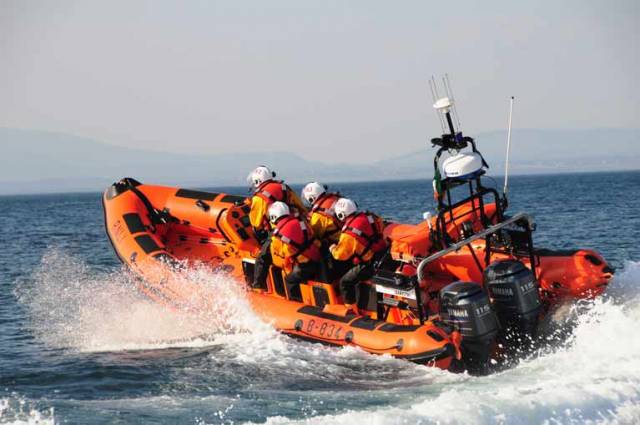Volunteer lifeboat crew with Bundoran RNLI rescued three swimmers last night (Monday 16 July) from the sea off Bundoran Beach after they got caught in a rip current. Sea conditions changed suddenly when the father and his two sons went swimming and the call for help was made.
Bundoran RNLI was called by Malin Head Coast Guard at 8.07pm and proceeded immediately to the scene, a short distance from the lifeboat station. The father and his two sons had been swimming off the main beach in Bundoran when conditions changed. The sea state was showing two to three-metre broken swells and the water was described as choppy.
The three people were immediately recovered onto the lifeboat and brought back to the station where they were met by an ambulance and taken to Sligo General Hospital. The father and his sons were all wearing wetsuits with one of the group also wearing a personal floatation device.
Twenty minutes after the lifeboat crew returned to the station, they received another callout to swimmers in difficulty but were stood down when they had managed to get to shore safely.
Commenting on the callout Bundoran RNLI Lifeboat Operations Manager Captain Tony McGowan said, ‘Conditions in the sea had been good before the callout but had taken a sudden turn for the worse. It is understood the three casualties got caught in a rip current and were in some difficulty. Thankfully there were able to walk from the lifeboat to the waiting ambulance.’
‘For anyone caught in a rip current the advice is not to try to swim against it or you’ll become exhausted. If you can stand, wade don’t swim. If you can, then you should swim parallel to the shore until free of the rip and then head for shore. Always raise your hand and shout for help. We wish the three people involved in last night’s rescue a full recovery.’
Rips are strong currents running out to sea, which can quickly drag people and debris away from the shallows of the shoreline and out to deeper water. Rip currents can be difficult to spot, but are sometimes identified by a channel of churning, choppy water on the sea's surface. They can flow at 1–2mph but can reach 4–5mph, which is faster than an Olympic swimmer.































































